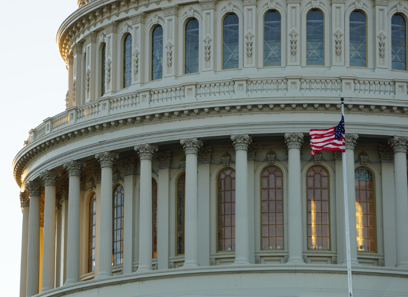M&A Outlook: Analyzing the Influence of Economic Conditions on Mergers and Acquisitions
The Effect of Mergers and Acquisitions on Market Dynamics and Competition
The landscape of mergings and purchases provides an intricate interaction between promoting development and potentially weakening affordable integrity within markets. As business seek strategic positionings to enhance performance and innovation, the ramifications on customer selection and market pricing warrant careful examination. While the advantages of such consolidations can be apparent, the darker effects often emerge, increasing important inquiries about market power and the regulatory frameworks developed to maintain balance. This conversation welcomes an expedition of the subtleties entailed, revealing how these corporate maneuvers reshape the very structures of competitors.
Introduction of Mergers and Acquisitions
Mergers and purchases (M&A) play an essential function in shaping the landscape of modern business, as firms look for to improve their competitive edge and achieve critical purposes. M&A transactions involve the combination of companies or properties via different financial purchases, consisting of mergers, where two firms integrate to form a new entity, and acquisitions, where one firm acquisitions one more outright. These activities are driven by a myriad of variables, such as the pursuit of harmonies, diversity of product offerings, and the need to go into new markets.
The M&A procedure usually involves numerous stages, consisting of calculated planning, due persistance, negotiation, and assimilation (Emerging Market Opportunities). Business conduct detailed analyses to recognize prospective targets that line up with their growth approaches and evaluate the functional and financial effects of a transaction. Governing considerations additionally play an important role, as antitrust legislations are made to avoid monopolistic techniques that could hurt competitors
As organizations navigate the intricacies of M&A, the end results can substantially influence stakeholders, including workers, consumers, and shareholders. Recognizing the characteristics of M&A is essential for examining their effects within the broader context of market behavior and competitive positioning.
Positive Effects on Market Dynamics
The debt consolidation of business via acquisitions and mergers can result in considerable positive impacts on market dynamics. Among the key advantages is the improvement of functional effectiveness. By integrating resources, companies can enhance procedures, decrease redundancies, and accomplish economic climates of scale, ultimately boosting and decreasing prices earnings. This effectiveness can translate into reduced rates for customers, promoting a more open market setting.

Furthermore, increased market share arising from mergings can give companies with greater bargaining power with suppliers and providers, facilitating improved terms that can profit the general supply chain.
Unfavorable Consequences for Competitors

Additionally, the elimination of competitors with purchases can stifle development. When principals merge, smaller companies might battle to complete, resulting in a homogenization of services and items. The resultant absence of competitors can produce an environment where remaining companies have much less motivation to purchase r & d.
Moreover, mergers can create barriers to access for brand-new firms, as the merged entity might take advantage of its improved resources to dominate the market. This can deter potential participants, consequently limiting competitors and advancement in the long-term.
Ultimately, while mergings and purchases can supply critical advantages, their possible to weaken competitors requires careful factor to consider of their wider implications on the marketplace dynamics. The equilibrium in between growth and affordable integrity continues to be an essential worry in evaluating such company techniques.
Governing Considerations and Oversight
Governing structures play an important duty fit the landscape of mergings and purchases, ensuring that market dynamics continue to be competitive and fair. These frameworks are made to stop anti-competitive actions and to protect customer passions. Regulative bodies, such as the Federal Profession Commission (FTC) in the United States and the European Payment in the EU, evaluate suggested purchases and mergings based upon their potential effect on competitors within the market.
The evaluation procedure entails an extensive examination of the marketplace share, potential for monopolistic practices, and the general financial effects of the transaction. Regulators commonly enforce problems or require divestitures to reduce worries over lowered competition, guaranteeing that the joined entity does not check this site out dominate the market unfairly.
In addition, transparency is a crucial part of governing oversight. Stakeholder engagement, consisting of public examinations, allows for diverse perspectives to be taken into consideration in the decision-making procedure. This joint strategy helps to foster a well balanced regulatory setting that promotes advancement while securing affordable methods. Eventually, efficient regulative considerations are important in maintaining market integrity and encouraging healthy and balanced competitors when faced with developing company landscapes.
Study and Real-World Examples
Regularly, situation researches of noteworthy mergings and acquisitions show the extensive effects these transactions can carry market dynamics. The 2000 merging between AOL and Time Warner works as a prime example, where the prepared for synergies dropped short, causing a drastic decrease in shareholder worth. This case emphasizes how social imbalances and overestimation of market potential can disrupt competition.
On the other hand, the purchase of WhatsApp by Facebook in 2014 exhibits a successful assimilation that reshaped the interaction landscape. Emerging Market Opportunities. Facebook leveraged WhatsApp's customer base to improve its solution offerings, efficiently raising its market prominence while maintaining competition in the messaging field
Another considerable instance is the merger of Exxon and Mobil in 1999, which produced among the world's largest oil business. This combination caused greater effectiveness however elevated issues regarding lowered competitors in the power market, motivating regulatory scrutiny.
These instances highlight the complicated interaction in between mergings and procurements and market characteristics, showcasing both the possible advantages and challenges that can emerge, ultimately forming affordable read the article landscapes throughout markets.
Final Thought
Mergers and purchases play an essential function fit market dynamics and competition. While they can cause raised performances and technology, they additionally present dangers such as decreased competition and higher customer costs. Efficient regulative oversight is important to guarantee that the benefits of M&An activities are optimized while alleviating unfavorable effect on market competitors. A well balanced method can help maintain customer welfare and cultivate an affordable landscape that encourages both development and technology.
One major concern is the possibility for decreased market competitors, as mergers usually lead to the debt consolidation of market power among less gamers. Regulative bodies, such as the Federal Profession Compensation (FTC) in the United States and the European Payment in the EU, assess proposed procurements and mergers based on their possible effect on competition within the market.

Mergers and acquisitions play a pivotal role in shaping market characteristics and competitors. Effective governing oversight is necessary to guarantee that the advantages of M&A tasks are made the most of while mitigating adverse effects on market competition.